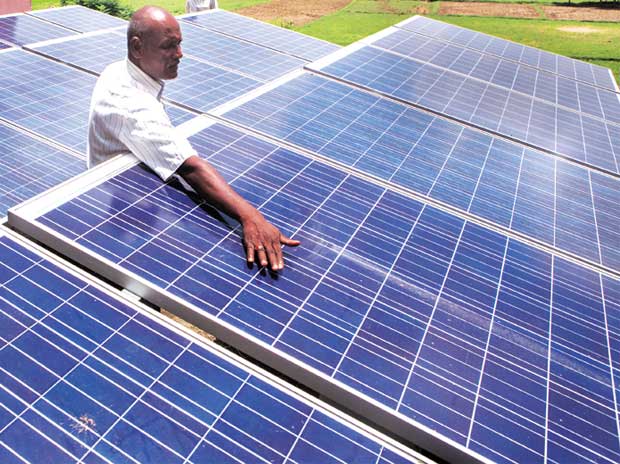
India 5th globally in green energy jobs
According to the International Renewable Energy Agency’s (Irena) Annual Review 2016, there was a five per cent increase over a year before in the sector, with new jobs being created even as employment in the broader energy sector falls. “This increase is being driven by declining RE technology costs and enabling policy frameworks. We expect this trend to continue as the business case for renewables strengthens and as countries move to achieve their climate targets agreed in (the) Paris (agreement),” said Adnan Z Amin, director-general of Irena. (CREATING MORE JOBS THAN FOSSIL FUELS)
In this country, solar and wind energy markets have seen substantial activity, as the government’s ambitious RE targets are translated into concrete policy frameworks, Irena said. “Central and state auctions for solar photovoltaics (PV), for instance, have resulted in installation of 1.9 gigawatt (Gw) in 2015 and an impressive pipeline of 23 Gw. Solar PV employs an estimated 103,000 people in grid-connected (31,000 jobs) and off-grid applications (72,000 jobs)… With increasing domestic demand, local companies are utilising their production capabilities and several foreign companies are interested in investments,” it said.
Irrespective of further developments in manufacturing, reaching the government’s goal of 100 Gw in PV by 2022 could generate 1.1 million jobs in construction, project commissioning & design, business development and operations & maintenance. The report quoted the Council on Energy, Environment and Water, and National Research Development Corporation to say that 30 per cent of these jobs would be highly skilled ones and this requires stepping up of training and education. Indian wind energy industry had installation of about 2.5 Gw and employment at a steady 48,000. In Japan, despite a 28 per cent increase to 377,000 jobs linked to renewables, there is a likelihood of job losses next year. This is the result of a recent policy reversal on support for solar PV technology, the agency said. Earlier this month, Amin warned that countries eyeing new coal-fired plants, including Japan, must reassess their energy strategy to avoid stranded assets.
Japan’s loss in jobs after a period of significant growth could be China’s gain in terms of increasing market share as Japan loses its competitive advantage on solar PV.
The report, titled Renewable Energy & Jobs, also provides a global estimate of the number of jobs supported by large hydropower, with a conservative estimate of an additional 1.3 million direct jobs worldwide. RE jobs in America increased six per cent, while employment in oil and gas decreased 18 per cent. RE in China employed 3.5 million people, while oil and gas employed 2.6 million. “As in the previous years, enabling policy frameworks remained a key driver of employment. National and state auctions in India and Brazil, tax credits in the United States and favourable policies in Asia have all contributed to employment increases.”
Countries with the most RE jobs in 2015 were China, Brazil, America, India, Japan and Germany. The solar PV sector remains the largest RE employer worldwide, with 2.8 million jobs, with jobs in manufacturing, installation and operations & maintenance. Liquid biofuels was the second largest global employer with 1.7 million jobs, followed by wind power, which grew five per cent to reach 1.1 million global jobs.
“As the ongoing energy transition accelerates, growth in RE employment will remain strong,” said Amin. “Irena’s research estimates that doubling the share of RE in the global energy mix by 2030 — enough to meet global climate and development targets — would result in more than 24 million jobs worldwide.”
Noting that gender-disaggregated data in the sector is scarce, Irena said it conducted an online survey among private companies in the sector to close the gap.
Nearly 90 companies from about 40 countries participated, representing the entire value chain of the sector. Among the companies that responded, women represent an average of 35 per cent of the workforce. This is a significant finding, considering women only account for 20-25 per cent of the workforce in the overall energy industry.
This might reflect greater interest among women in sustainability related fields. Yet, the percentage remains lower than women’s economy-wide share in employment, which is 40-50% for most OECD countries, according to the World Bank.
Please confirm If you want to unregister
You have been unregistered from gradlink







